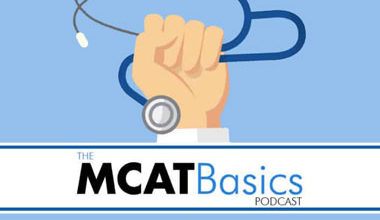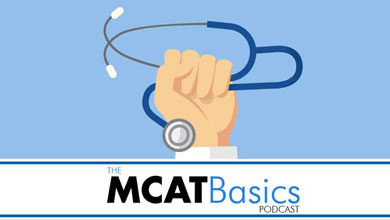Sam Smith covers the structure, life cycle, classification, and mutation of viruses. Including the life cycle and structure of bacteriophages and retroviruses.
- [01:17] Definition of a Virus
- [02:14] Virus Structure
- [11:15] Viral Life Cycle
- [18:02] Bacteriophage Life Cycles
- [21:41] Retrovirus Life Cycle
- [25:36] Difference Between Virus Transduction and Transfection
- [28:17] Virus Classification
- [33:33] Virus Mutation
- [41:52] Subviral Particles
Virus Structure
All virus structures have two parts: a small collection of nucleic acid (either DNA or RNA) and a capsid or protein coat that surrounds that genetic material. Viruses are not living organisms; therefore, they cannot reproduce by themselves. They require a host cell and its components to replicate. With enough copies of itself, the virus may cause death to its host. Viruses can infect both bacteria and eukaryotic cells.
Some viruses may have an envelope, an outer layer around the capsid. It’s made out of phospholipids, protein, and glycoprotein. As the virus buds out of the host’s cell, it takes a piece of the plasma membrane with it as its envelope. These types of viruses are easier to sterilize because of their sensitivity to heat and detergents. Enveloped viruses cannot survive outside of host environments, so they are directly transmitted from one living organism to another.
Viruses may also have viral regulatory and accessory proteins which are non-essential proteins that regulate replication and their life cycles.
Viral Life Cycle
The life cycle of a virus depends on its type, but all virus life cycles share 3 common steps: cell entry, replication, and cell exit. In order for a virus to infect its host, it must first be able to enter the host cell by passing through the plasma membrane. To do this, it attaches to the receptor of a host cell through its spike protein. After attachment, the virus penetrates the host cell. In SARS-CoV2, the S1 subunit of the spike protein binds to the receptors of the host cell. Then the S2 subunit fuses the envelope with the cell membrane so that the contents of the viral particle are released into the cell.
Once the virus enters the cell, it take control of the cell’s protein machinery in order to replicate and make copies of itself. The RNA genome is released from the capsid into the host cell through a process called encoding. The RNA is translated into viral protein through ribosomal activity, and the new virus is assembled with the newly synthesized proteins. During assembly, mature particles are formed. Structural protein and viral RNA come together to form a capsid through hydrophobic, electrostatic, or van der Waals forces. This is a spontaneous process that pools and holds the RNA genome and the capsid together.
The last stage in the viral life cycle is cell exit where assembled viral particles are released which can infect other cells. After replication, the RNA of the virus is translated into spike proteins These spike proteins are embedded in the plasma membrane of the host cell, allowing the virus to hijack the host cell’s endomembrane. After being embedded, the assembled capsid containing the viral genome buds out of the plasma membrane, taking pieces of it along to form the envelope.
Bacteriophage Life Cycle
A bacteriophage is a virus that only infects bacteria. Compared to other viruses, its structure looks unusual due to it having a a head, collar, tail, tail fibers, and baseplate.
A bacteriophage has two different life cycles. In the lytic cycle, the phage infects a bacteria cell and then actively replicates inside it. New copies of the bacteriophage exit the host bacteria, causing it to explode. In the lysogenic cycle, the phage inserts its DNA into the bacteria’s DNA. This infected DNA is then integrated into the host bacteria’s singular chromosome. Every time the bacteria divides, the viral DNA is also replicated. The virus is dormant but its DNA is integrated in the host’s chromosome. In some cases, the bacteriophage can become active and start producing viral particles inside its host. When this happens, the phage moves from the lysogenic cycle to the lytic cycle.
Retrovirus Life Cycle
A retrovirus is an RNA virus which inserts a DNA copy of its genetic makeup into a host cell’s genome in order to replicate. Aside from the RNA genome, a retrovirus has two other main components: reverse transcriptase and integrase.
The retrovirus life cycle is similar to the general virus life cycle with a few exceptions. The first step is cell entry, where the virus binds and fuses with the host’s cell membrane. Next, reverse transcription occurs. Viral RNA genome is converted into DNA by the reverse transcriptase. The third step is integration, where in proviral DNA is produced. DNA is integrated into the host cell’s chromosomes. This process is facilitated by the retrovirus’ integrase. Afterwards, the proviral DNA is transcribed as a viral protein. Viral particles are then assembled. As an enveloped virus, mature virions bud out of the cell, carrying remnants of the cell plasma membrane as envelopes.
Reverse transcription and integration are unique to the retrovirus life cycle. Retroviruses like HIV are harder to cure because their viral DNA has been integrated into the host’s genome. When host cell replicates, viral DNA will also be copied to daughter cells. The retrovirus may cause its host to die if it’s actively replicating inside it. HIV patients must take lifetime medication in order to prevent this from happening.
Virus Transduction vs Transfection
Virus transduction is the transfer of genetic material between cells through a virus. Transfection occurs when nucleic acid is introduced into cells via nonviral methods such as heat-shocking.
Virus Classification
The Baltimore Classification is used to categorize viruses based on the type of nucleic acid they contain. In total, there are 7 types of viruses. The first classification is the double stranded DNA virus. Examples of these are the adenovirus and herpes virus. In order to produce mature virions, the virus’ DNA must first be transcribed to RNA; only then can it be translated into protein. The same process also applies to single strand DNA viruses which is the second classification.
Next, we have the most unusual classification: the double stranded DNA reverse transcriptase virus. The Hepatitis B virus falls under this category. Its replication process is the most complicated one. To start, the virus’ DNA genome is transcribed to RNA and then reverse transcribed into DNA. After which the DNA is transcribed and translated as a viral protein.
For single stranded RNA viruses, there are two sub-classifications. The first is the positive sense single stranded RNA virus. Its genome can be directly translated to synthesize protein, acting like a regular mRNA. Coronavirus is an example of a positive sense RNA virus. The second sub-classification is the negative sense or antisense single strand RNA virus. To make viral protein, it must first be converted into a positive sense RNA virus. Viruses under the double stranded RNA classification must also be converted to a positive sense single stranded RNA virus before it can replicate.
Lastly, we have the single stranded reverse RNA transcriptase virus. All retroviruses are of this kind. The virus’ RNA must be reverse transcribed into DNA. Once done, the virus’ DNA is integrated into the host cell’s genome which can then be expressed by the host’s cells.
For virus classification, we recommended that you focus on double stranded and single stranded DNA viruses, as well as positive sense and negative sense RNA viruses. You must know the general process of how they are converted to viral protein. The MCAT will ask you to classify viruses based on how they replicate.
Virus Mutation
Comparison of mutation rates is done by tracking the number of mutations per nucleotide site in different organisms. It has been found that RNA viruses have the highest mutation rate, followed by DNA viruses, bacteria, and then eukaryotes. RNA viruses’ rate of mutation is 10 million times greater than eukaryotes.
DNA viruses replicate via DNA polymerase. The DNA polymerase has exonuclease activity, which is the ability to inspect and correct mistakes in DNA. Similarly, RNA viruses replicate using RNA polymerase. Encoding of RNA polymerase must be done by the virus itself. It cannot use the host cell’s polymerase because it converts DNA to mRNA. The virus’ RNA polymerase does not have exonuclease activity, which means that it cannot check for errors. These mistakes lead to more alterations in the genetic sequence, hence the higher mutation rate for RNA viruses.
The rapid mutation rate can help viruses to respond quickly to selection pressures. In the case of HIV, the virus’ mutation limited the effectivity of the antibody injection therapy. The treatment infuses antibodies that bind to HIV to help the body’s immune system to clear the virus. Antibody therapy is able to control the infection for a while but the HIV virus will re-emerge. After sequencing, scientists have discovered that mutations occurred which helped the HIV virus escape the injected antibodies.
Bear in mind that mutation occurs randomly. Viruses may become more or less harmful due to mutation.
Subviral Particles
Subviral Particles are infectious agents that have simpler structures compared to viruses. The first type are viroids which are made up of RNA that’s 250-500 nucleotide long. These are only found in plants. The second type are prions which are misfolded proteins that can influence normal proteins of the same type to take on abnormal shapes which may eventually lead to cell death.

